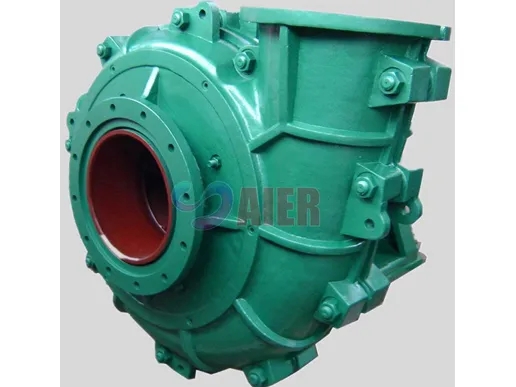Dec . 11, 2024 12:05 Back to list
Hydraulic Slurry Pump Manufacturers and Their Key Innovations in Pumping Solutions
The Role of Hydraulic Slurry Pump Factories in Modern Industry
In the world of heavy industry, hydraulic slurry pumps play a crucial role in the transportation of abrasive and viscous materials. These specialized pumps are designed to handle slurries—mixtures of liquid and solid particles—found in various sectors such as mining, wastewater treatment, and construction. As the demand for effective and reliable slurry handling solutions continues to grow, the importance of hydraulic slurry pump factories becomes increasingly evident.
Understanding Hydraulic Slurry Pumps
Hydraulic slurry pumps are engineered to manage thick, gritty slurries that can cause wear and tear on standard pumps. The design of these pumps usually includes robust materials that can withstand erosion from abrasive particles, high flow rates, and high pressures. Typically, these pumps use a centrifugal mechanism to propel slurries, making them suitable for various applications where other types of pumps may fail.
The operation of hydraulic slurry pumps is based on principles of fluid dynamics, where the energy imparted by rotating impellers moves the slurry through a series of pipes and valves. This technology allows for efficient movement of materials over long distances, making it essential in industries such as mining for transporting tailings or sludge, in construction for moving cement and other materials, and in wastewater systems for pumping sludge and treated effluent.
The Manufacturing Process
The production of hydraulic slurry pumps involves several stages, starting from the design phase to the final assembly and testing. Factories typically employ advanced engineering and manufacturing techniques to ensure precision and quality.
1. Design and Engineering It begins with computer-aided design (CAD) software to create detailed 3D models of pump components. Engineers consider various factors such as flow rate, pressure, and material compatibility during this stage.
2. Material Selection Given the harsh environments in which slurry pumps operate, the choice of materials is crucial. High-chromium iron, rubber, and ceramics are often used to construct pump components that resist wear and corrosion.
3. Machining Precision machining is essential for ensuring the parts fit together seamlessly. Factories utilize CNC machines to produce intricate components with high accuracy, further enhancing durability and performance.
hydraulic slurry pump factories

4. Assembly and Quality Control Once all components are manufactured, they are assembled in a controlled environment. Factories implement rigorous quality control procedures, including testing each pump for performance and reliability. This step ensures that every unit meets the necessary industry standards.
5. Final Testing and Shipping The final product undergoes extensive testing under real-world conditions to confirm its ability to handle various slurry compositions and flow rates. Once testing is complete, pumps are prepared for shipping to customers worldwide.
The Economic Impact
The rise of hydraulic slurry pump factories has significant economic implications. They contribute to job creation not only within the factories but also in associated sectors such as logistics, research and development, and after-sales services. As industries expand and the need for efficient materials handling increases, these factories play a crucial role in supporting economic development across various regions.
Moreover, hydraulic slurry pumps facilitate more sustainable practices in industries like mining and wastewater treatment. By improving the efficiency of slurry transport, they minimize energy consumption and reduce the environmental impact associated with traditional pumping methods. This aligns with global efforts to promote sustainability and environmental stewardship in industrial operations.
Future Trends
The future of hydraulic slurry pump factories appears promising, with advancements in technology leading to smarter, more efficient pump designs. Innovations such as IoT integration for real-time monitoring and predictive maintenance are emerging trends. These technologies can enhance the operational efficiency of pumps, reduce downtime, and extend their lifespan, ultimately providing significant cost savings for industries.
Moreover, the increasing focus on sustainable practices heightens the demand for innovative slurry handling solutions. Factories that prioritize environmentally friendly design and manufacturing processes will likely find themselves at the forefront of the market.
Conclusion
Hydraulic slurry pump factories are pivotal players in modern industrial processes. Their ability to manufacture reliable, efficient, and durable pumps not only supports various industries but also drives economic growth and promotes sustainable practices. As technology advances, these factories will continue to evolve, meeting the ever-changing demands of the global market while contributing to a more sustainable industrial future.
-
Top Submersible Pump Companies High Quality Manufacturers & Suppliers in China
NewsJul.08,2025
-
High Quality Seal for 5 Inch Dredge Pump Reliable China Manufacturer & Supplier
NewsJul.08,2025
-
High-Efficiency Slurry Sand Pump from Leading China Manufacturer – Durable & Reliable Solutions
NewsJul.07,2025
-
High-Quality Slurry Pump Made in China Durable Steel Mill Slurry Pump & Parts
NewsJul.07,2025
-
High Quality Excavator Dredge Pump Manufacturer & Suppliers from China – Reliable, Durable, Efficient Solutions
NewsJul.07,2025
-
Wholesale Slurry Pump Closed Impeller Supplier High Efficiency China Slurry Pump Closed Impeller
NewsJul.06,2025
